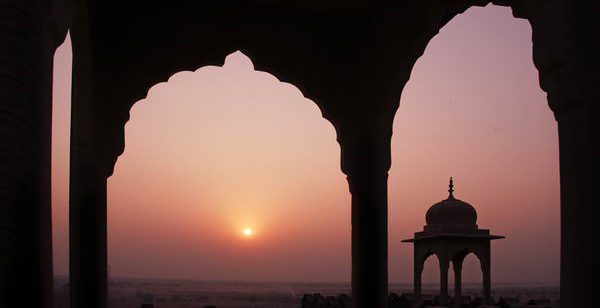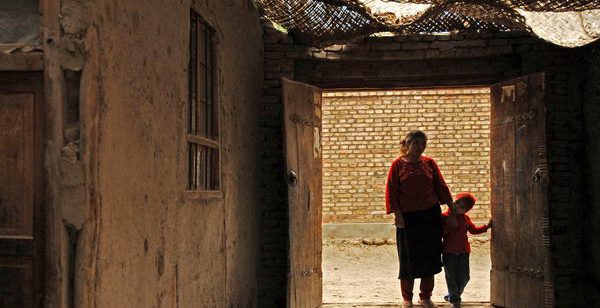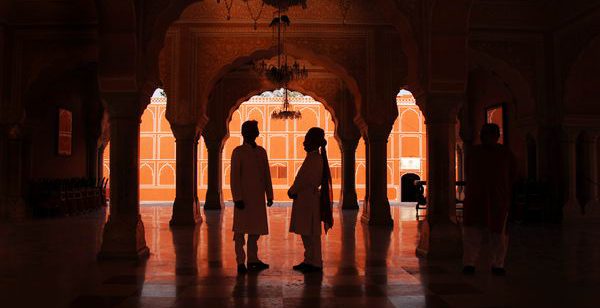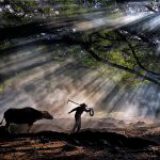Technology changes with time, but the fundamentals and recipes in photography remains. This article was first published in 2006, revised in 2018 and 2020
Imagine yourself traveling abroad to a place which is rich in historical architecture where the arches and pillars look so magnificent. For once, you are overwhelmed by the scale of the structures and you may start wondering how to approach the angles to take pictures.
This article may not be the perfect antidote for you to get the shots done, but the following series of images with its description should help you embark in your journey in getting the shots with this technique call “framing”.
This is not a new technique, as many painters had executed it several centuries ago in various ways for their masterpieces. Framing is actually one of the more frequently used Design elements in visual arts. The main difference between the artists and us photographers is artists can add a frame anytime in their paintings while the photographers have to look for appropriate foreground or background object with distinct shape to frame the main subject.
You may be surprised that the Program Mode (Not Auto) on your camera is usually more than sufficient to get the framing shots done, though the Aperture Priority Mode is used in cases when you need a deeper depth of field. No doubt, the image enhancement software such as the Adobe Photoshop or ACDSee Pro will be very useful to allow you enough room for your creative touches to make your images look better.
The “ingredients” for framing:
- Foremost, you must identify a main subject.
- Ideally, there should be a distinctly shaped foreground or background object which can serve as a frame.
- Look out for “clean” uncluttered background to make your main subject stand out.
- Ask yourself if you need a deeper depth of field to render both the main subject and the frame is good clarity and sharpness. This will determine what aperture to be used.
- Shoot wider and allow some room for cropping later with the image enhancement software such as Adobe Photoshop or ACDSee Pro.
- Certainly, the lighting condition or the quality of light is equally important. Getting shots done in the early morning and late afternoon will give that soft subtle tone compared to the harsh lighting conditions which one can see at the noon time.
With the above in mind, you can use this technique and tips in your quest to get those stunning images of framed shots in a uniquely different way.
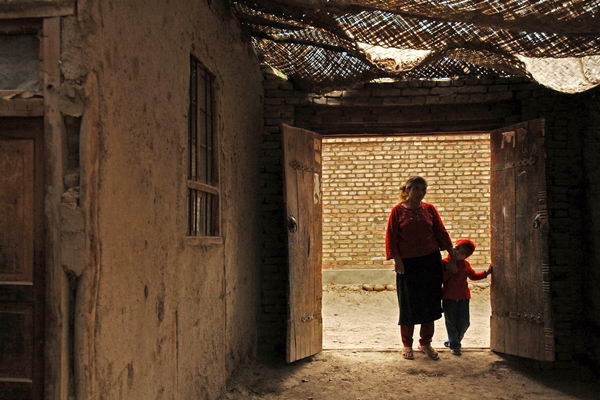
Centre Weighted Metering, Daylight White Balance, ISO500, Aperture Priority Mode, Shutter Speed 1/320s, Aperture f4.5
I was in Xinjiang and we were exploring a village. This is the good thing about photography tour compared with those normal ones as we had ample time to shoot what we wanted. We saw this frame but there was no subject. We were too modern dressed to pose for one another in this rustic setting. We had to “ambush” and wait. The mother and her son came in and they were surprised to see the 7 of us clicking away. I used the Centre Weighted metering to capture the details of the wall behind the mother and son. The shadow/highlight function of the Photoshop revealed the interior of the hut. If I used Matrix Metering, the interior will be brighter but the wall behind will be over exposed. Aperture Priority Mode with the maximum Aperture and higher ISO were used to enable me to get a faster Shutter Speed to minimize camera shake as I did not have the tripod with me.
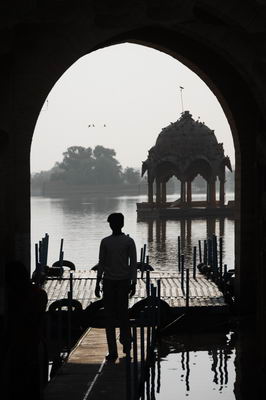
Centre Weighted Metering, Daylight White Balance, ISO100, Aperture Priority Mode, Shutter Speed 1/1250s, Aperture f5.3
This gate which leads to the artificial lake in India served as a good frame. There was a structure in the background but it may not be a strong enough subject though it can be a complementary subject. I waited and a man walked on the plank. I had to wait till his silhouette form was distinct and not merged with the shadow before I fired away 5 shots. I am not going to miss this shot, I told myself. Centre Weighted Metering was used to get this silhouette effect. ISO100 was used as I wanted to capture good details of the moody background. The lighting condition was bright enough for ISO100 to be used.
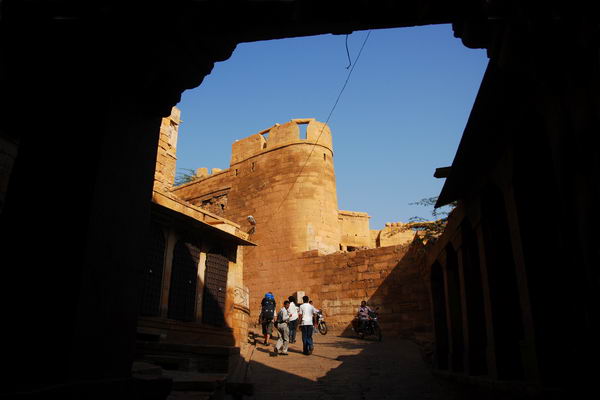
Centre Weighted Metering, Daylight White Balance, ISO160, Aperture Priority Mode, Shutter Speed 1/2500s, Aperture f3.5
The shadow and the opening of a doorway created a frame effect on this picture. There were no people at first, which made the picture somewhat empty. I waited with 2 other participants from my Art of Seeing Oversea Photography Trip. When the people (main subject) appeared, we fired away happily. Centre Weighted metering was used to ensure that the building was well exposed and the foreground doorway opening was darkened to make a distinct frame. As the picture was not taken during noon time, the quality of light was good and the walls were not washed out.
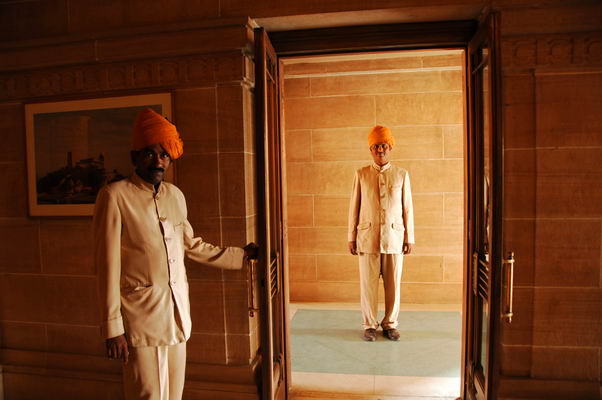
Centre Weighted Metering, Daylight White Balance, ISO200, Aperture Priority Mode, Shutter Speed 1/10s, Aperture f4
Sometimes, we have to create some setup with poses to get the shot done. I was in a palace in India with the participants of my Art of Seeing Oversea Photography Trip and we were so tempted by this photography opportunity with the available models. A thought struck my mind and I requested 2 of these gentlemen to do some posing for us. I asked one of them to stand on the outside as the main subject and the other holding the door handle to make him look relaxed. The man outside stood in attention, and somewhat resembled a portrait painting on the wall. The Centre Weighted Metering was used as I wanted a good exposure of the man outside. It was late afternoon with the light hitting the walkway, hence there was ample light outside as compared to noon time.
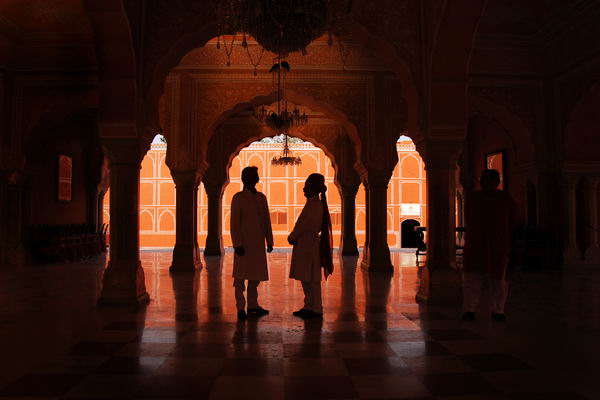
Centre Weighted Metering, Daylight White Balance, ISO100, Program Mode, Shutter Speed 1/125s, Aperture f5.6
A set up image with 2 security guards posing as the main subject. I had to wait for the tourists to move away in the background before I can start shooting. I positioned the 2 security guards so that their silhouettes did not merge with the pillars. Centre Weighted Metering was used to get this silhouette effect. If 3-D Matrix metering was used, I would end up seeing the details of the interior. The time the shot was taken was nearing late afternoon with subtle lighting, hence the colour of the wall was not washed out.
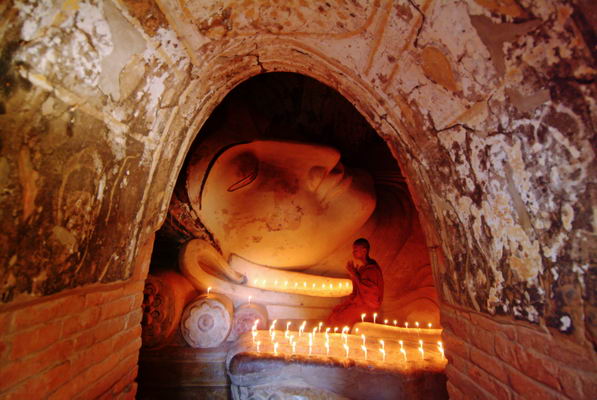
Centre Weighted Metering, Daylight White Balance, ISO800, Program Mode, Shutter Speed 1/30s, Aperture f4
This picture was shot with a tripod but ISO800 was used in order to achieve a faster shutter speed to minimize the possibility of subject shake as the sangha tend to move a little. This tunnel which led into the temple created a very nice frame. The main subject is the sangha. For this picture, the exposure will be similar regardless whether the Centre Weighted Metering or Matrix Metering was used, since there was not too much contrast in the lighting condition as the monk was surrounded by the bright candles. If there were no candles lit, the exposure would be a lot more trickier due to the contrast lighting.
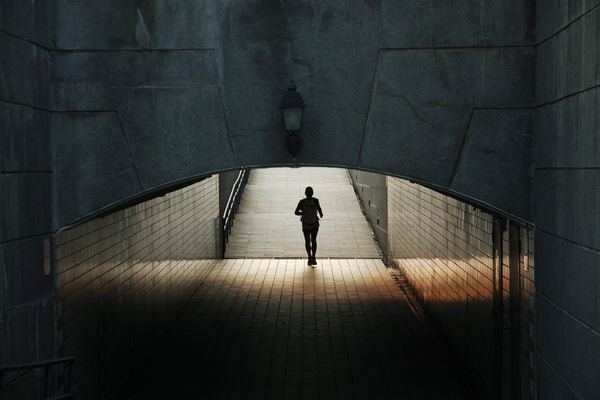
Centre Weighted Metering, Daylight White Balance, ISO250, Aperture Priority Mode, Shutter Speed 1/320s, Aperture f4.5
The tunnel walkway presents a nice frame effect with the setting sun’s subtle light as the light source. A jogger appeared and I fired away continuously. Aperture Priority Mode was selected to allow me to use a bigger aperture to get a faster shutter speed even though the ISO was not very high. I prefer to use a lower ISO for this picture to capture better details. Centre Weighted Metering was used to achieve this silhouette effect.

Centre Weighted Metering, Daylight White Balance, ISO100, Program Mode, Shutter Speed 1/350s, Aperture f9.5
Shot through a walkway of the hotel in Pushkar overlooking the holy lake. The walkway with the distinctly shaped arch formed a unique frame. Centre Weighted Metering was used to ensure good exposure of the buildings (main subject) in the background. The picture was shot during sunset and the golden light was seen highlighting the frame on the right with a golden glow. ISO100 was used to achieve better details.

Centre Weighted Metering, Daylight White Balance, ISO100, Aperture Priority Mode, Shutter Speed 1/5000s, Aperture f3.5
The wave was choppy and the boat was shaking. It was quite hard to hold my grip on my camera and hence I needed a faster Shutter Speed to minimize camera shake by using the biggest Aperture with the Aperture Priority Mode. Centre Weighted Metering was used to get the silhouette effect and the top cover of this boat served as a frame. I asked my friend to stand in front to be the main subject.
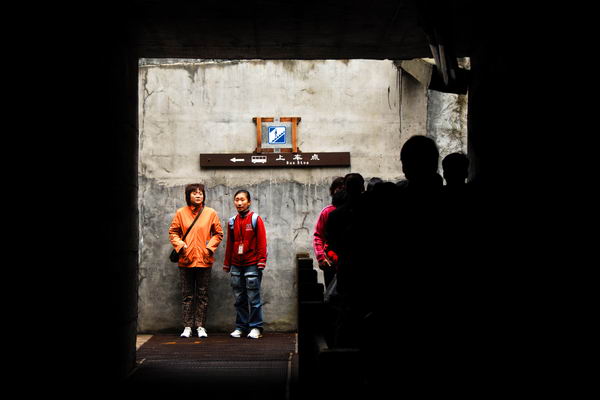
Centre Weighted Metering, Daylight White Balance, ISO250, Aperture Priority Mode, Shutter Speed 1/250s, Aperture f4.5
With a stroke of luck, these 2 ladies in their striking colour jacket appeared and were very good main subject as they stood out clearly. The walkway served as a frame. The lighting was not ample, hence I had to use Aperture Priority Mode with the biggest Aperture and the metering set to Centre Weighted to get a relatively fast shutter speed. 1/250s was good enough to minimize camera shake and there was no worry for subject shake as the two girls were not moving much.
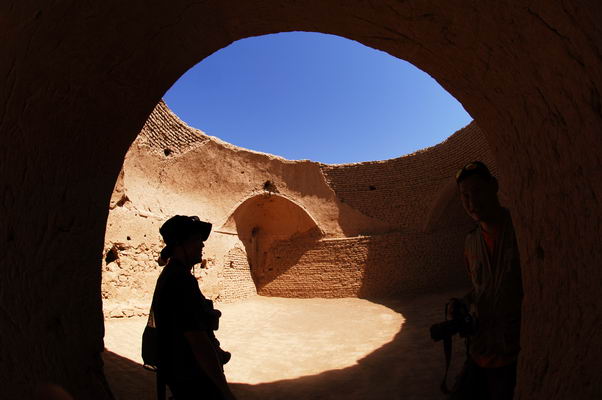
Centre Weighted Metering, Daylight White Balance, ISO100, Aperture Priority Mode, Shutter Speed 1/500s, Aperture f7.1
The group of us was taking shelter from the hot sun in this semi-desert. Notice how the harsh light washed out certain details on the wall and the floor. Through the tunnel which served as a frame, I asked my friend to pose as the main subject. The Aperture Priority Mode was used as I needed a smaller Aperture to get a bigger depth of field to have both my friend’s silhouette and the wall both relatively sharp. ISO100 was used as the lighting was ample and I wanted to see the details. Centre Weighted Metering was used to get the silhouette effect.
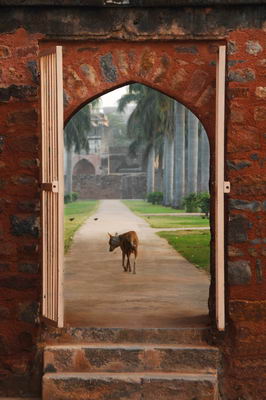
Centre Weighted Metering, Daylight White Balance, ISO500, Aperture Priority Mode, Shutter Speed 1/160s, Aperture f5.3
Luck was on my side when the dog began to walk up the steps. I ran and managed to shoot this frame with the dog as the main subject. I zoomed in with my long lens and used Aperture Priority Mode with the biggest Aperture and the ISO set to 500 to get a fast enough Shutter Speed.
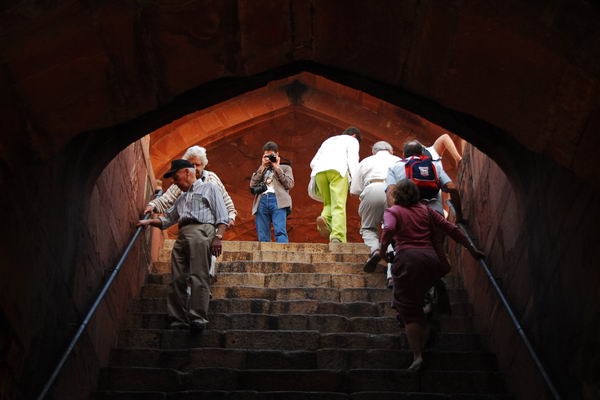
Centre Weighted Metering, Daylight White Balance, ISO500, Aperture Priority Mode, Shutter Speed 1/90s, Aperture f4.2
The encounter of 2 photographers and we shot each other. I was probably his main subject and he was my main subject. I had to use Aperture Priority Mode set to the biggest Aperture and the ISO set to 500 in order to get a faster Shutter Speed since the lighting condition was not bright. Centre Weighted Metering was used to base the exposure on the people.
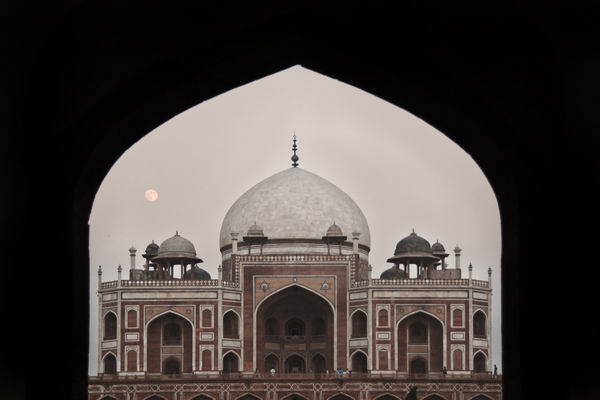
Centre Weighted Metering, Daylight White Balance, ISO500, Aperture Priority Mode, Shutter Speed 1/125s, Aperture f4.5
This is not the Taj Mahal, but the Humayan Tomb in New Delhi. The setting sun came with the rising moon coupled with the frame of the tunnel walkway. I had to used Centre Weighted Metering to base my exposure on the tomb. ISO500 and big Aperture were used to ensure a fast Shutter Speed as I did not have the tripod with me.
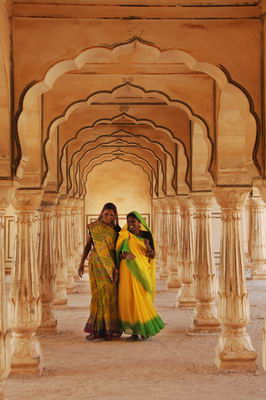
Matrix Metering, Daylight White Balance, ISO200, Aperture Priority Mode, Shutter Speed 1/125s, Aperture f4.5
This is a very nice setting with multiple frames but there were no subjects initially. I managed to get hold of 2 workers in their colourful clothing to pose for us. Some sort of a cat walk, they enjoyed the session walking up and down the walkway several times. ISO200 was used as I wanted the details. Aperture Priority Mode was used with the big Aperture to ensure a faster Shutter Speed. I was not worried about the smaller depth of field despite the big Aperture since the focal length was short and I was quite far from the two of them. Matrix Metering was used to properly expose the overall image.
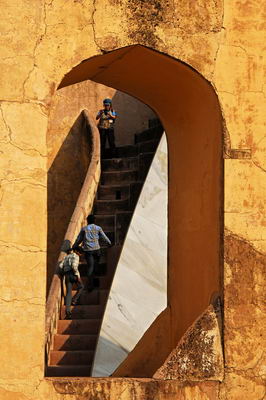
Centre Weighted Metering, Daylight White Balance, ISO320, Program Mode, Shutter Speed 1/500s, Aperture f11
I was at this interesting place in New Delhi, India where there are massive structures built to observe the astrological signs. I noticed this interesting frame and I waited for some people to walk up the steps. Luckily, that day was crowded with tourists and locals alike. Soon, there were people moving up the steps. I fired away 10 shots and chose this one.

Centre Weighted Metering, Daylight White Balance, ISO100, Program Mode, Shutter Speed 1/250s, Aperture f4
Titled “Eyes of the World”, these sanghas are taking a break from their daily routine and looking out of the windows of the monastery in Inle, Myanmar. The oval shaped windows look like 2 eyes. I waited and took many shots of this angle. Initially, there was only one sangha at the window and I snapped away. Slowly, another came and two more appeared. For the purpose of symmetry, I prefer this version of 2 sanghas on each of the window. Either Centre Weighted or Matrix Metering can get this shot done as there was not too much contrast overall in the shadow and highlight portion. ISO 100 was used as it was a very sunny day and I sure got a good sun tan while taking this shot. Forgot my umbrella.
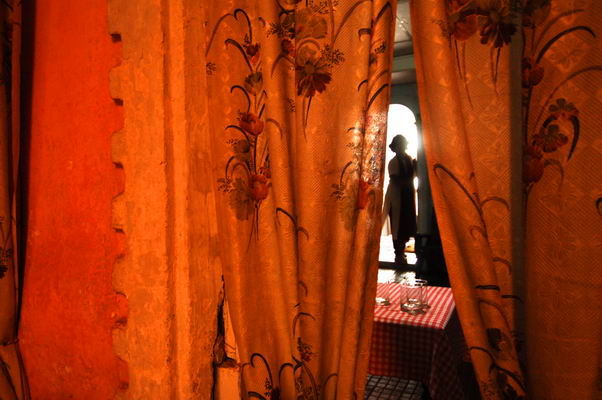
Matrix Metering, Daylight White Balance, ISO800, Program Mode, Shutter Speed 1/15s, Aperture f4
I was having my lunch at one of the Portugese inspired café in Kochi, India. While waiting for my lunch, the breeze flowed into the café brushing the curtain apart. I asked my accompanying writer who was on assignment with me and my local guide to each hold apart the curtain, hence creating an opening which served as a frame. I needed a subject. We waited and the shy waitress who refused to let me take a picture initially came out from the open kitchen. I began clicking away at 5 frames per second. The Matrix Metering allowed an even overall good exposure of the curtain and the background.
